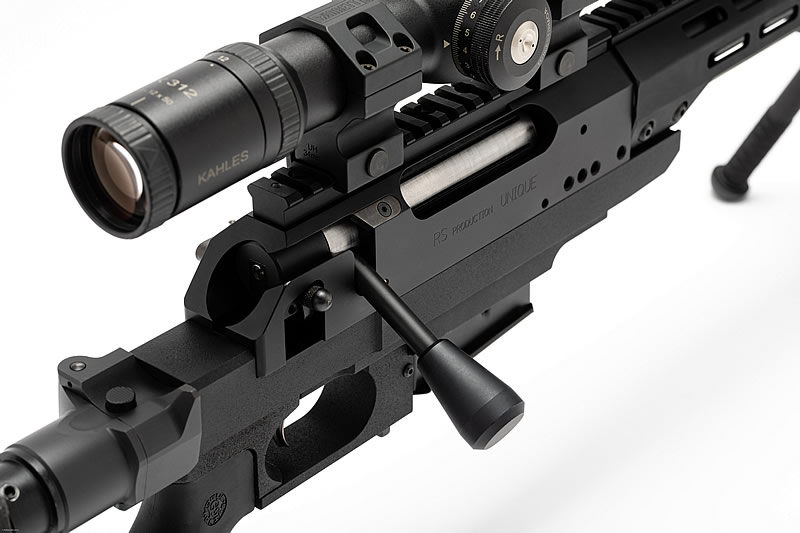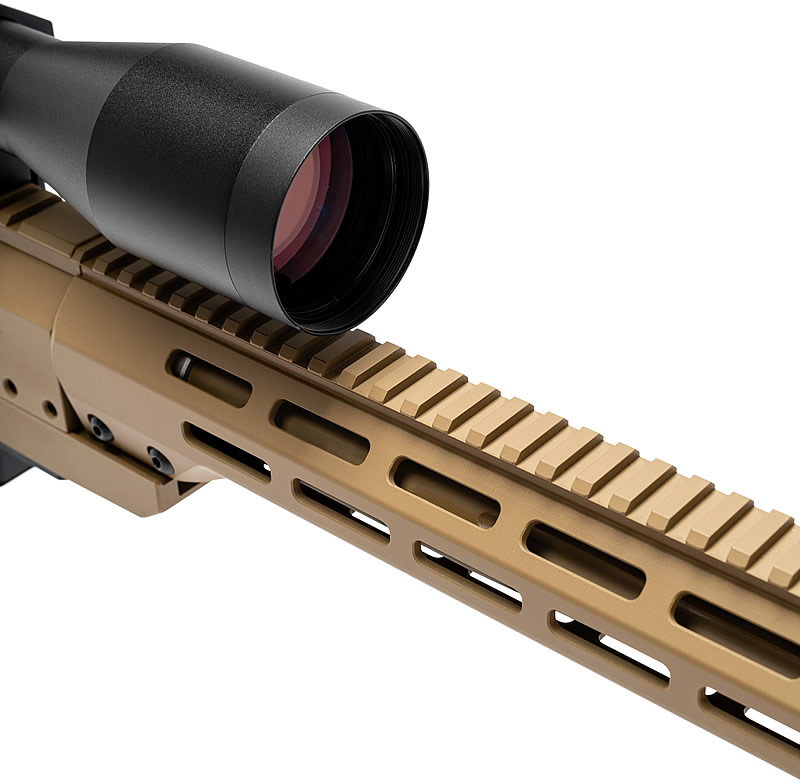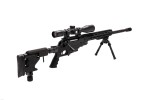It would be a good idea at this stage to proceed by elimination, first of all, define the preferred use of the rifle.
In our choice of rifle, and apart from any budgetary notion, we are essentially looking for performance and precision and possibly versatility (the icing on the cake).

In terms of precision, only one type of rifle remains unmatched to this day, bolt-action rifles. This is due to the lack of simultaneous movement of the bolt carrier when firing the shot. Unlike semi-automatic rifles, on bolt-action rifles, only the shooter is able to manually perform the operation of extracting and chambering the rifle at a time of his choosing.
Since we are here in the LRS (Long Range Shooting) section, we are already going to eliminate a good number of existing models, in particular those which are designed for hunting - Why? Mainly for the quality of the barrels.
Indeed, the rifles dsigned for hunting, must offer as much lightness as possible, so they are mainly mounted with thinner barrels which deform more easily and are less accurate than the heavy barrels generally mounted on the LRS (Long Range Shooting) rifles. However, it is the barrel that will do most of the precision work. It should be of "Match" grade, steel or stainless steel, preferably fluted and threaded. Fluted because it allows both to lighten the weight of the rifle, and helps better heat dissipation, and threaded to allow especially the mounting of a muzzle brake to reduce recoil.

As for the length of the barrel, it must be in line with the shooting distance that will be practiced. Remember that the longer the barrel, the heavier the rifle will be! so make sure to choose the length of barrel that will really be useful to you. A very important detail in the choice of the barrel, "inner barrel thread", is what allows the bullet to rotate on itself in order to gain speed and stability. When you read: 1/10", it means that it will take 10 inches for the bullet to make a complete rotation, and so on. We recommend a tight barrel thread, ideally 1/10".

A second difference between hunting rifles and PRS (Precision Rifle Shooting) rifles lies in the mounting of the barrel. While the barrel of a hunting rifle is completely integral with the frame, that of the TLD rifle must be floating (devoid of any contact with other elements of the rifle) in order to avoid parasitic vibrations that could disturb the accuracy of the shot.
To move on with the comparison, hunting rifles are traditionally offered with wooden stocks, which should be banned on PRS (Precision Rifle Shooting) rifles because not only are they heavier than stocks in synthetic material or aluminum, but they can especially work according to the weather conditions and thus distort your aiming settings. Not to mention the possibilities of full adjustments of synthetic or aluminum stocks intended for LRS (Long Range Shooting) rifles that do not exist on hunting rifles.
Then comes the quality of the trigger group. One of the factors that primarily affects accuracy is the ability of the shooter to initiate the shot by pulling the trigger without moving the rifle. The harder the trigger is to pull, the greater the risk of parasitic movements (the finger stroke). Prefer a "Match" trigger, usually adjustable to suit you best. The setting should be moderate, not too light to avoid accidental shots and not too heavy to avoid finger strokes.

Finally, you have to choose the caliber. The list of known calibers for LRS (Long Range Shooting) is quite impressive. We will not be able to recommend one caliber over another as it depends solely on your preferences. However, for many reasons, the preferred caliber for the PRS (Precision Rifle Shooting) is the 308 Winchester, it’s versatile, it’s the cheapest, it’s available, etc.. For shooting ranges of up to 800 meters, the 308 Winchester will live up to its reputation. For those looking for more sensations, prefer the "Magnum" calibers, like the 300 Winchester Magnum, or the prestigious 338 Lapua Magnum, otherwise traditional calibers such as, 6 Norma BR, 6 or 6,5 Creedmoor, 243 Winchester, 7,08 Remington, 0.30-06, 6,5x47 Lapua, etc..
Although multi-caliber bolt action rifles have higher prices than the standard ones, they have the advantage of being for most "Custom" production rifles and not mass production. This means that the level of fit and finish they offer is significantly higher. In addition, your Multi-caliber bolt action rifle will accompany you throughout your development as long-range shooter. You can adapt the type and length of your barrel as well as the choice of your caliber without having to change rifles each time you want to change discipline.
Once again if your budget does not allow you to acquire a bolt-action rifle for the LRS (Long Range Shooting), having all the qualities of performance, precision and durability, go for a good second-hand model, in good conditions rather than buying a new but poor-quality rifle that will quickly limit your results and prevent you from finding the pleasure you are looking for through your passion. After all, we are not here out of necessity but out of passion, looking for pleasure above all.


 Turkey: The Phenomenon of Counterfeit Hunting and Shooting Firearms
Turkey: The Phenomenon of Counterfeit Hunting and Shooting Firearms
 The Art of Firearm Maintenance: Beyond Routine, A Renewed Passion with RifleCX
The Art of Firearm Maintenance: Beyond Routine, A Renewed Passion with RifleCX
 The Gun Behind the Legend- The KING ELEVEN 1911 Pistol
The Gun Behind the Legend- The KING ELEVEN 1911 Pistol
 The Duel of Popular Calibers: The History of .30-06 and .308 Win
The Duel of Popular Calibers: The History of .30-06 and .308 Win
 The Superiority of .308 Win Caliber in Hunting: An In-Depth Analysis
The Superiority of .308 Win Caliber in Hunting: An In-Depth Analysis
